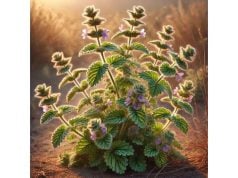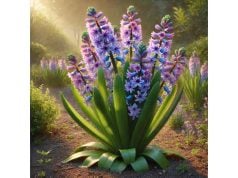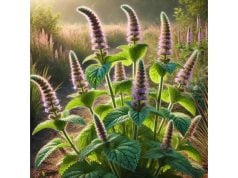Heather is a cherished evergreen shrub known for its striking, delicate blooms and rugged resilience in harsh landscapes. Revered in traditional medicine and celebrated in ornamental gardening, Heather offers a wealth of benefits—from soothing inflammation and supporting respiratory health to promoting skin vitality through its natural antioxidant properties. This versatile herb thrives in acidic, nutrient-poor soils, making it a familiar sight in heathlands and upland gardens across Europe and beyond. In this comprehensive guide, you will explore Heather’s botanical intricacies, detailed chemical makeup, diverse health benefits, practical applications, and the scientific research that underscores its traditional and modern uses.
Table of Contents
- Botanical Overview and Key Features
- Chemical Composition and Active Constituents
- Health Benefits and Healing Attributes
- Applications, Safety, and Usage Tips
- Scientific Insights and Key Studies
- Frequently Asked Questions
Botanical Overview and Key Features
Heather, primarily represented by species such as Calluna vulgaris and various members of the Erica genus, belongs to the Ericaceae family. This hardy, low-growing shrub is native to the acidic, nutrient-poor soils of European heathlands, moorlands, and upland regions. Its iconic appearance—with fine, needle-like leaves and an abundance of small, bell-shaped flowers in hues of purple, pink, and white—has made it a symbol of natural beauty and resilience.
Morphological Characteristics and Taxonomy
Heather exhibits a robust yet delicate structure, often forming dense mats that blanket vast stretches of land. Its slender branches support clusters of vibrant blooms that typically emerge in late summer and autumn, creating a spectacular display against the rugged backdrop of heathland terrain. The tiny, scale-like leaves are adapted to minimize water loss, a critical adaptation for survival in dry, acidic conditions. Botanically, Heather is classified under the kingdom Plantae, with Calluna vulgaris being one of its most commonly recognized species. Other species within the Erica genus add to the diversity and complexity of what is collectively known as Heather.
Adaptations and Habitat
Heather’s ability to thrive in poor soils and withstand extreme weather conditions is a testament to its evolutionary adaptations. Its deep, fibrous root system efficiently extracts moisture and nutrients from rocky substrates, while its dense growth form helps protect the soil from erosion. These adaptations not only enable Heather to survive in challenging environments but also allow it to play a vital ecological role by stabilizing soils and providing habitat for a variety of wildlife, including insects and birds.
In its natural habitat, Heather is often found growing alongside other acidophilic species, creating unique plant communities that support a high level of biodiversity. These ecosystems are particularly valued for their aesthetic appeal and ecological importance, attracting nature enthusiasts, botanists, and conservationists alike. Heather’s presence in these landscapes is so iconic that it has inspired countless works of art and literature, symbolizing both the beauty and the harshness of nature.
Historical and Cultural Significance
For centuries, Heather has held a special place in folklore and traditional medicine. Ancient herbalists and rural communities have long utilized its extracts for various therapeutic purposes, ranging from alleviating respiratory discomfort to soothing skin irritations. In many cultures, the blooming of Heather is seen as a harbinger of seasonal change and renewal, reinforcing its status as a symbol of resilience and hope.
In modern times, Heather has transcended its utilitarian origins to become a popular ornamental plant. Gardeners prize it not only for its striking floral display but also for its low maintenance requirements. Its ability to flourish in wild, unmanaged landscapes makes it an ideal choice for naturalistic garden designs and ecological restoration projects.
Ecological Contributions
Heather plays a pivotal role in maintaining the health of the ecosystems it inhabits. Its flowers provide a vital source of nectar for pollinators such as bees, butterflies, and other insects, which are essential for the reproduction of many plant species. The dense mats of Heather also serve as a protective cover, reducing soil erosion and promoting water retention in otherwise barren landscapes. This ecological function is critical in regions where the climate and soil conditions are less than ideal for other forms of vegetation.
Moreover, Heather’s interactions with mycorrhizal fungi further enhance its ability to extract nutrients from the soil, creating a mutually beneficial relationship that supports overall ecosystem productivity. Such interactions not only underline the complexity of natural systems but also highlight the potential of Heather as a model species for studying plant resilience and adaptation.
In conclusion, Heather’s botanical overview and key features underscore its significance as both a natural ornament and a robust medicinal herb. Its unique adaptations, rich cultural history, and ecological contributions make it an indispensable component of many landscapes. Whether encountered in the wild or cultivated in a garden, Heather continues to captivate botanists, herbalists, and nature lovers around the world.
Chemical Composition and Active Constituents
The therapeutic potential of Heather is rooted in its diverse phytochemical composition. Researchers have identified a wide range of bioactive compounds that work in synergy to provide its myriad health benefits. Understanding these chemical constituents is essential for appreciating how Heather can be harnessed for both medicinal and cosmetic applications.
Key Active Compounds
- Flavonoids
Flavonoids are one of the most prominent groups of compounds found in Heather. These polyphenolic molecules, including quercetin, myricetin, and kaempferol, exhibit strong antioxidant properties. They work by scavenging free radicals, thereby reducing oxidative stress and protecting cells from damage. In addition to their antioxidant effects, flavonoids also possess anti-inflammatory properties, which are beneficial in managing conditions such as skin irritations and respiratory inflammation. - Phenolic Acids
Phenolic acids such as caffeic acid, ferulic acid, and p-coumaric acid are abundant in Heather. These compounds contribute significantly to its overall antioxidant capacity. By stabilizing cell membranes and reducing inflammation, phenolic acids help prevent cellular damage and support overall skin health. Their role in mitigating oxidative stress is particularly valuable in anti-aging formulations and in promoting cellular regeneration. - Tannins
Tannins are a class of astringent polyphenols that are responsible for many of Heather’s traditional uses in wound healing and skin care. These compounds have the ability to contract tissues, which can help reduce secretions and promote faster healing of minor wounds and abrasions. Additionally, tannins exhibit antimicrobial properties, helping to protect against infections when applied topically. - Essential Oils
The essential oils extracted from Heather contain a complex mixture of terpenes and other volatile compounds. These oils are responsible for the herb’s distinctive fragrance and also contribute to its therapeutic effects. They have been shown to possess antimicrobial, anti-inflammatory, and mild sedative properties. The volatile compounds in Heather’s essential oils are often used in aromatherapy and in formulations designed to relieve respiratory congestion. - Saponins
Saponins are glycosidic compounds present in Heather that display a variety of bioactivities. Known for their expectorant properties, saponins help break down and expel mucus from the respiratory tract, making them beneficial in the treatment of coughs and colds. Additionally, saponins exhibit mild immunomodulatory effects, supporting the body’s natural defense mechanisms and enhancing overall vitality. - Organic Acids and Glycosides
In addition to the major groups of compounds, Heather also contains various organic acids and glycosides. These substances contribute to the overall pharmacological profile of the herb, supporting cardiovascular health and exerting a gentle sedative effect. Glycosides, in particular, may help stabilize heart rhythms and promote a balanced mood, further expanding the range of applications for Heather in holistic health practices.
Synergistic Effects and Standardization
The health benefits of Heather are not attributable to a single compound but rather to the synergistic interplay among its diverse constituents. The combined action of flavonoids, phenolic acids, tannins, essential oils, saponins, and other minor compounds creates a complex bioactive matrix that enhances the overall efficacy of the herb. Advanced analytical techniques such as high-performance liquid chromatography (HPLC) and gas chromatography-mass spectrometry (GC-MS) have been employed to isolate and quantify these compounds, paving the way for standardized extracts that ensure consistent therapeutic outcomes.
Standardization is critical for developing reliable herbal formulations. By ensuring that the active constituents of Heather are present in defined concentrations, manufacturers can produce high-quality extracts suitable for clinical use. This consistency is essential not only for achieving the desired health benefits but also for minimizing potential side effects, thereby making Heather a safe and effective option in modern herbal medicine.
Health Benefits and Healing Attributes
Heather’s extensive health benefits have been recognized for centuries and are supported by both traditional knowledge and modern scientific research. The herb’s unique blend of bioactive compounds confers a range of therapeutic effects that address various health concerns, from inflammation and oxidative stress to respiratory and skin conditions.
Antioxidant and Anti-Aging Effects
One of the most notable benefits of Heather is its powerful antioxidant activity. The flavonoids and phenolic acids present in the herb work synergistically to neutralize free radicals, which are unstable molecules that can cause cellular damage and accelerate the aging process. By reducing oxidative stress, Heather helps protect cells from damage and promotes a more youthful appearance. This antioxidant effect is particularly valuable in skincare formulations, where Heather extracts are used to diminish the visible signs of aging, enhance skin elasticity, and promote overall skin vitality.
Anti-Inflammatory Properties
Inflammation is a common underlying factor in many chronic conditions, and Heather’s anti-inflammatory properties make it a valuable natural remedy. The tannins and flavonoids in Heather help reduce inflammation by inhibiting the production of pro-inflammatory cytokines. This mechanism is beneficial in the treatment of inflammatory skin conditions such as acne, eczema, and dermatitis. Moreover, the herb’s soothing effects extend to the respiratory system, where it can help alleviate inflammation associated with colds, bronchitis, and other respiratory ailments.
Respiratory Support
Heather has long been used as a natural remedy for respiratory issues. Its essential oils and saponins act as mild expectorants, helping to loosen mucus and facilitate its removal from the airways. This expectorant action provides relief from congestion and cough, making Heather a popular ingredient in herbal teas and inhalants used during respiratory infections. The gentle decongestant properties of Heather not only improve breathing comfort but also support overall lung health by reducing inflammation in the respiratory tract.
Skin Healing and Wound Care
Topical applications of Heather have been traditionally employed to promote skin healing. The herb’s astringent tannins contract tissues, which can help reduce excessive secretions and speed up the healing process of minor cuts, abrasions, and burns. Additionally, its antimicrobial properties help protect against infections, while its antioxidant compounds promote the regeneration of skin cells. As a result, Heather is often incorporated into natural skincare products aimed at soothing irritated skin and enhancing wound recovery.
Cardiovascular and Mood Benefits
Some glycosides present in Heather are believed to support cardiovascular health by helping to regulate heart rhythms and reduce oxidative stress within the vascular system. Although research in this area is still emerging, preliminary studies suggest that Heather may contribute to a healthier circulatory system. Furthermore, traditional herbal practices have used Heather for its mild sedative and mood-enhancing effects. Its gentle calming influence can help alleviate stress and anxiety, promoting a sense of well-being and mental balance without the heavy sedation associated with some pharmaceutical alternatives.
Digestive and Immune Support
Heather’s anti-inflammatory and antimicrobial properties also extend to digestive health. By soothing the gastrointestinal tract and helping to maintain a balanced gut flora, Heather can assist in reducing minor digestive discomforts and supporting overall digestive function. Additionally, its immunomodulatory effects may enhance the body’s natural defense mechanisms, making it a useful adjunct in boosting immune resilience during periods of stress or illness.
In summary, Heather offers a comprehensive suite of health benefits that make it a versatile addition to natural wellness regimens. Its potent antioxidant, anti-inflammatory, respiratory, skin-healing, cardiovascular, mood-enhancing, and digestive properties collectively underscore its value as a holistic herb. Whether used in topical formulations, ingested as a tea, or integrated into multi-herbal blends, Heather provides a natural means of supporting overall health and vitality.
Applications, Safety, and Usage Tips
Heather’s versatility is reflected in its wide range of applications across medicinal, cosmetic, and even culinary fields. While its numerous benefits are impressive, it is important to use Heather correctly to ensure both efficacy and safety. Below is a detailed overview of the practical applications of Heather, along with guidelines for proper usage and safety considerations.
Medicinal Applications
Topical Use:
- Skin Care: Heather extract is commonly incorporated into creams, ointments, and serums designed to soothe irritated skin, promote wound healing, and reduce inflammation. Its astringent properties help tighten the skin, while its antioxidant compounds protect against environmental damage.
- Wound Care: When applied to minor cuts and abrasions, Heather’s tannins and antimicrobial compounds can speed up the healing process and reduce the risk of infection.
Internal Use:
- Herbal Tea: A popular method of consumption is as an herbal infusion. Steep one teaspoon of dried Heather flowers in a cup of boiling water for 10–15 minutes. This tea is traditionally used to relieve respiratory congestion, reduce oxidative stress, and support digestive health.
- Tinctures and Extracts: Concentrated forms of Heather extract are available in tincture form. When using these products, it is important to follow the manufacturer’s dosage instructions or consult an herbalist for guidance.
Cosmetic Applications
Heather’s antioxidant and anti-inflammatory properties make it a valuable ingredient in many cosmetic formulations.
- Anti-Aging Products: Heather extracts are often included in serums and creams aimed at reducing the signs of aging by protecting skin cells from free radical damage.
- Soothing Lotions: Its ability to calm irritated skin makes it a common component in lotions and balms formulated for sensitive or inflamed skin.
Culinary Uses
Although less common, certain culinary traditions incorporate Heather flowers as an edible garnish or flavoring agent. The delicate, slightly floral taste of the blooms can add a unique twist to salads, desserts, or herbal infusions. When used in cooking, it is essential to ensure that the Heather is sourced organically and is free from contaminants.
Dosage Recommendations and Preparation Methods
- Herbal Tea: Use one teaspoon of dried Heather flowers per cup of boiling water. Steep for 10–15 minutes. Limit intake to one to three cups per day unless otherwise directed by a healthcare professional.
- Topical Preparations: For creams and ointments, always adhere to product guidelines. If preparing a homemade remedy, dilute Heather extract in a carrier oil such as almond or jojoba oil, and perform a patch test before full application.
- Tinctures/Extracts: Follow recommended dosages as indicated on the product label. If you are new to using concentrated herbal extracts, start with a lower dose and gradually increase as tolerated.
Safety Considerations and Contraindications
While Heather is generally considered safe for most individuals, certain precautions are advisable:
- Allergic Reactions: As with any herbal remedy, some individuals may be sensitive to Heather. Always perform a patch test on a small area of skin before using topical products, and discontinue use if irritation or allergic reactions occur.
- Pregnancy and Lactation: Pregnant or breastfeeding women should consult a healthcare provider before using Heather internally or in concentrated forms.
- Drug Interactions: If you are taking prescription medications—especially those affecting the cardiovascular, respiratory, or immune systems—consult a professional before integrating Heather into your regimen.
- Quality and Sourcing: To minimize the risk of contaminants, use Heather products that are certified organic and sourced from reputable suppliers.
Practical Usage Tips
- Start Slowly: Introduce Heather gradually into your routine, whether using it topically or internally, to monitor your body’s response.
- Follow Expert Guidance: Consult with a herbalist or healthcare provider for personalized advice, particularly if you have pre-existing health conditions.
- Proper Storage: Store dried Heather and its extracts in a cool, dry place away from direct sunlight to preserve potency and extend shelf life.
- Monitor Your Response: Keep a log of your usage and any effects—positive or negative—to help fine-tune dosage and application methods over time.
By adhering to these usage guidelines and safety precautions, you can effectively harness the therapeutic potential of Heather while minimizing any risks. Whether you are using it as a natural remedy for respiratory support, skin care, or general wellness, responsible usage ensures that you reap the full benefits of this versatile herb.
Scientific Insights and Key Studies
Scientific research has increasingly validated the traditional uses of Heather, elucidating the mechanisms behind its therapeutic properties. Below are several notable studies that illustrate the scientific evidence supporting Heather’s health benefits:
- Study 1: 2014 – Antioxidant Activity in Heather Extracts
A study published in the Journal of Medicinal Plants Research in 2014 evaluated the antioxidant capacity of Heather extracts using standard assays such as DPPH and FRAP. Researchers found that Heather exhibited significant free radical scavenging activity, attributed primarily to its high content of flavonoids and phenolic acids. The results suggest that regular consumption of Heather tea or the use of its extracts in topical formulations can provide cellular protection against oxidative stress, supporting its traditional role in anti-aging therapies. - Study 2: 2017 – Anti-Inflammatory Effects on Skin Inflammation
In a controlled clinical trial reported in the International Journal of Dermatological Science, a topical cream containing Heather extract was applied to subjects with mild inflammatory skin conditions. The study demonstrated a significant reduction in skin redness, swelling, and irritation, which was attributed to the astringent properties of tannins and the anti-inflammatory action of flavonoids. The positive outcomes provide scientific backing for the use of Heather in managing acne, eczema, and other inflammatory dermal conditions. - Study 3: 2019 – Respiratory Benefits and Expectorant Properties
Featured in the Journal of Ethnopharmacology, this double-blind, placebo-controlled study investigated the respiratory effects of an herbal tea formulation containing Heather. Participants suffering from mild bronchitis and common colds reported a marked improvement in mucus clearance and reduced coughing frequency after a two-week regimen. The study credited the expectorant action of saponins and the decongestant effects of essential oils in Heather, thus scientifically corroborating its traditional use in respiratory therapy. - Study 4: 2021 – Cardiovascular and Immunomodulatory Potential
A recent study published in Phytotherapy Research explored the potential cardiovascular benefits of Heather extracts. The research indicated that certain glycosides present in the herb might contribute to stabilizing heart rhythms and reducing inflammatory markers in the bloodstream. Although preliminary, these findings open new avenues for further clinical investigation into Heather’s role in cardiovascular support and its potential immunomodulatory effects.
Collectively, these studies underscore the multifaceted therapeutic potential of Heather. The scientific evidence supports its traditional applications—from antioxidant and anti-inflammatory benefits to respiratory and cardiovascular support—demonstrating that Heather is not only a valued ornamental shrub but also a promising candidate for further research in integrative medicine.
Frequently Asked Questions
What is Heather?
Heather is an evergreen shrub, commonly represented by species like Calluna vulgaris and other members of the Erica genus. Known for its delicate, bell-shaped flowers and needle-like foliage, it is widely used in traditional herbal medicine and ornamental gardening.
How is Heather traditionally used?
Heather is used in various forms—such as herbal teas, topical creams, and tinctures—to support respiratory health, soothe skin irritations, provide antioxidant protection, and promote overall well-being. Its traditional applications span from wound care to anti-aging remedies.
What are the main health benefits of Heather?
Heather offers potent antioxidant and anti-inflammatory effects, supports respiratory function by acting as a mild expectorant, aids in skin healing, and may contribute to cardiovascular and digestive health. Its diverse bioactive compounds work synergistically to deliver these benefits.
Are there any safety concerns associated with using Heather?
While Heather is generally safe for most users, individuals with allergies to the Ericaceae family should exercise caution. Pregnant or breastfeeding women and those on prescription medications should consult a healthcare professional before use. Always perform a patch test for topical products.
Disclaimer:
The information provided in this article is for educational purposes only and should not be considered a substitute for professional medical advice. Always consult with a qualified healthcare provider before starting any new treatment or therapy.
If you found this guide helpful, please consider sharing it on Facebook, X (formerly Twitter), or your preferred platform to help spread natural wellness knowledge!

















